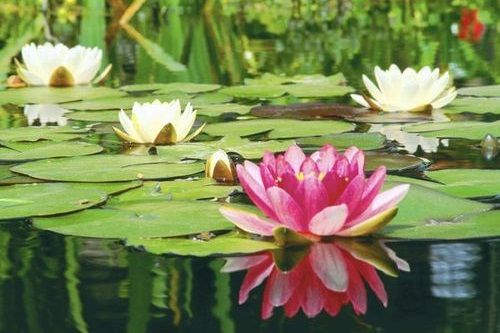The Life of Alvar Henrik Aalto
Alvar Henrik Aalto (1898–1976) was a Finnish architect who was one of the most influential proponents of functional design. Aalto's early work was strictly functional, but in later designs he integrated his buildings with their environment through the use of natural materials and free-flowing volumes and spaces.
Hugo Alvar Henrik Aalto was born in Kuortane, Finland, on Feb. 3, 1898. He graduated from the Polytechnic School in Helsinki in 1921 and three years later married fellow student Aino Marsio (1894–1949), who collaborated in all his designs until her death. Their first office was in Jyväskylä. In 1927 they moved to Turku, and in 1933 they relocated to Helsinki. In 1952 he married Elissa Mäkiniemi, who became a partner in his office, and after 1955 they lived in or near Helsinki. Aalto died in Helsinki on May 11, 1976.
Aalto's fame spread beyond Finland with early functional designs such as the block of buildings in Turku that includes the Finnish Theater (1927–1928); a tuberculosis sanatorium in Paimo (1929–1933); and his own home near Helsinki (1935–1936). For the sanatorium he designed some of the first bent-plywood furnishings, which were later mass-produced in a factory he set up near Helsinki. In 1933 Finmar was set up to import and sell Aalto furniture in Britain, and two years later the Artek company was founded to produce and distribute Aalto furniture and glassware.
From the late 1930s through the 1940s, Aalto divided his time between Finland and the United States. He also became active in city planning, an interest that grew out of his designs for industrial communities such as the Toppila Sulfate Mill at Oulu (1930). In 1944 he was put in charge of redesigning war-damaged cities in Finland. His most notable contribution to city planning was the idea of constructing basic housing units designed to be expanded over a period of years.
Aalto's departure from the severely functional in architecture was already evident in his Finnish pavilions for the Paris Exposition of 1937 and the New York World's Fair of 1939. Abandoning the starkly functional cube, he turned to more organic design. Wood, stone, and brick are prominent in his later work, in which the volumes, as well as the materials of the building, are closely integrated with the surrounding landscape. The serpentine shape of his dormitory for the Massachusetts Institute of Technology (1947) is an example of the greater freedom of form in Aalto's later designs. Other outstanding examples of this period are the Finnish Institute of Technology at Otaniemi (1949), the civic center on the island of Säynätsalo (1949–1952), and the cultural center at Wolfsburg, Germany (1963).
Hugo Alvar Henrik Aalto was born in Kuortane, Finland, on Feb. 3, 1898. He graduated from the Polytechnic School in Helsinki in 1921 and three years later married fellow student Aino Marsio (1894–1949), who collaborated in all his designs until her death. Their first office was in Jyväskylä. In 1927 they moved to Turku, and in 1933 they relocated to Helsinki. In 1952 he married Elissa Mäkiniemi, who became a partner in his office, and after 1955 they lived in or near Helsinki. Aalto died in Helsinki on May 11, 1976.
Aalto's fame spread beyond Finland with early functional designs such as the block of buildings in Turku that includes the Finnish Theater (1927–1928); a tuberculosis sanatorium in Paimo (1929–1933); and his own home near Helsinki (1935–1936). For the sanatorium he designed some of the first bent-plywood furnishings, which were later mass-produced in a factory he set up near Helsinki. In 1933 Finmar was set up to import and sell Aalto furniture in Britain, and two years later the Artek company was founded to produce and distribute Aalto furniture and glassware.
From the late 1930s through the 1940s, Aalto divided his time between Finland and the United States. He also became active in city planning, an interest that grew out of his designs for industrial communities such as the Toppila Sulfate Mill at Oulu (1930). In 1944 he was put in charge of redesigning war-damaged cities in Finland. His most notable contribution to city planning was the idea of constructing basic housing units designed to be expanded over a period of years.
Aalto's departure from the severely functional in architecture was already evident in his Finnish pavilions for the Paris Exposition of 1937 and the New York World's Fair of 1939. Abandoning the starkly functional cube, he turned to more organic design. Wood, stone, and brick are prominent in his later work, in which the volumes, as well as the materials of the building, are closely integrated with the surrounding landscape. The serpentine shape of his dormitory for the Massachusetts Institute of Technology (1947) is an example of the greater freedom of form in Aalto's later designs. Other outstanding examples of this period are the Finnish Institute of Technology at Otaniemi (1949), the civic center on the island of Säynätsalo (1949–1952), and the cultural center at Wolfsburg, Germany (1963).


Comments
Post a Comment